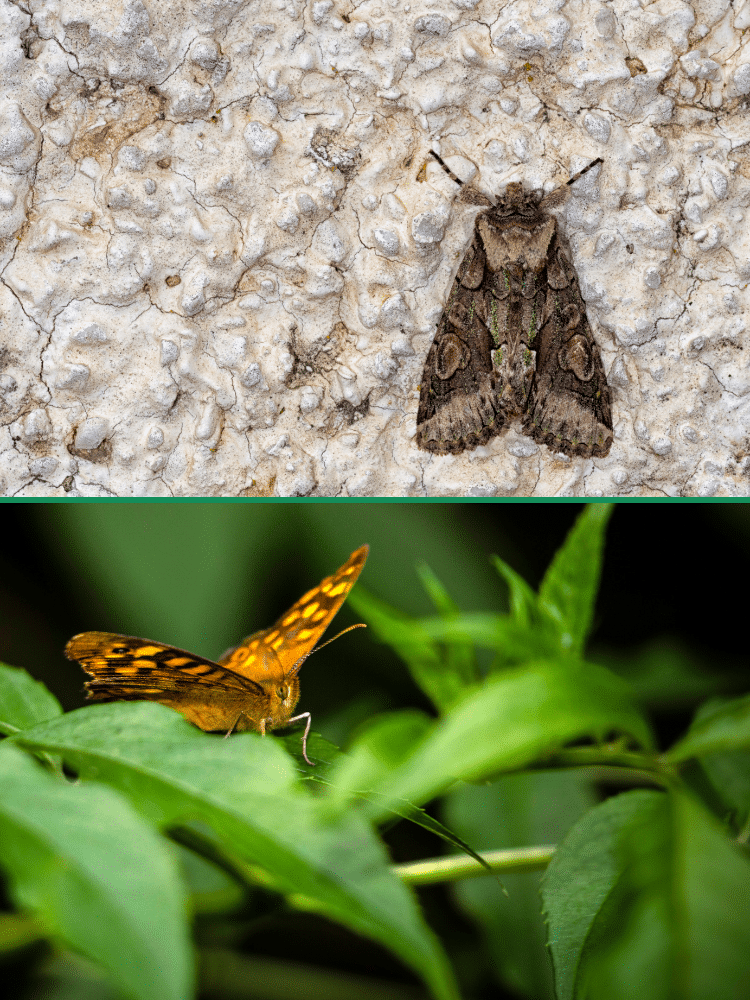During an earthquake, we cannot keep stable on our feet. We rely on the ground for our stability, so it makes sense that we cannot walk efficiently. But moths can fly away from the earth and suspend themselves in the air, so can moths fly during an earthquake?
No, moths cannot fly during an earthquake. There are a few theories as to why they can’t fly during this natural disaster, but the most common one is that they cannot gather the correct data to orient themselves to fly.
Why Can’t Moths Fly in an Earthquake?
Moths use their antennae and other body part sensors always to know where they are in the world. They can also gather data that lets them know which way is up, forward, and down.
This helps create a balanced moth and allows it to fly efficiently.
These signals are thought to be jumbled or lost in translation during an earthquake as the entire earth shakes around them.
It cannot gather the orientation it needs for its brain to tell its wings where to go and how to fly. In other studies, scientists have removed the moth’s antennae to see if they could fly, but they could not.

Like moths, butterflies would struggle to fly during an earthquake as the shaking earth will confuse butterflies, leaving them disorientated and not knowing which way is up.
Can Moths Fly In Wind?
When we see a moth fluttering along the flowered trail, they almost seem weightless. While they clearly have some mass and weight, it is minimal.
Moths cannot fly in the wind because the wind would overpower them.
The wind can catch the moth’s wings at an odd angle and knock the moth to the ground.
Even though moths use their antennae to help keep themselves balanced and orientated while flying, sometimes the wind is too strong, and the moth physically cannot fly through it.
Wind can even knock moths off of stationary objects where they take shelter. Most moths will seek shelter indoors or somewhere covered when inclement weather arises. A tiny moth is no match for nature’s fury.
Whether it is a breezy day or a full-on storm, moths will not risk flying in the wind. They cannot swim and could be knocked into a puddle. The wind itself could also be strong enough to break a wing.
Moths prefer not to risk it when the weather is not ideal. Instead, they will rest and emerge when the wind has died down.
Can Moths Fly During a Hurricane?
Since moths are so tiny, they tend to hide out during inclement weather. In the case of a hurricane versus a moth, the hurricane would win no contest.
High winds from hurricanes can damage homes, move cars, and pull trees from the ground with their roots still attached. The energy a hurricane gives off is no place for a tiny moth.
In addition to the strong winds, hurricanes bring intense rainstorms and flooding. When you compare the size of a raindrop to the size of a moth, it is not surprising that a single drop of rain can damage a moth.
Rain can seriously injure moths. Sometimes, rain drops can kill the moth if the drop is strong enough to squish the moth’s exoskeleton.
In addition to the dangers of being physically injured by the rain, rain drops can easily knock moths from flight or off of objects where they are sheltering.
Moths cannot swim, so they have little hope of surviving if they are knocked into a puddle or other body of water. Intense rain can drown a moth that has been knocked down and has been unable to fight the rain drops coming down on it.
Moths can sense bad weather before it arrives and will take appropriate precautions. They will look for shelter and a safe place to hide until bad weather has passed.
Hurricanes can interfere with moth feeding and mating schedule, which is a part of the reason we are seeing some moth species decline. Hurricanes can also destroy moth habitats.
No, butterflies cannot fly through a hurricane. The wind could damage their wings, the rain could push them to the ground, and the wind could blow them into a puddle, causing them to drown.
What Can I Do to Help Moths During Bad Weather?
Moths need a safe place to stay during bad weather. Providing shelter in your garden space is a great way to help moths stay safe until the sun shines again.
Growing sturdy shrubs that offer protection from the elements is one way to help the moths.
You can also opt to create moth houses. A moth house is similar to a butterfly house and will allow moths to enter and exit safely but prevent other predators from entering. It also will keep the moths out of the rain.
Most moths like to hang out in forested areas with lots of trees. Trees are where lots of moths take shelter during the day. Moths are nocturnal and rest during the daylight hours and emerge at night.
Growing large and abundant trees gives the moths places to shelter inside when the weather is bad. It also helps them lay eggs, and many larvae species will eat leaves from trees as their food source.
Summary
Moths cannot fly during an earthquake. Moths become disorientated and cannot work out which way is up and down when an earthquake strikes, so they will take cover. This is also why moths avoid flying during bad weather.







